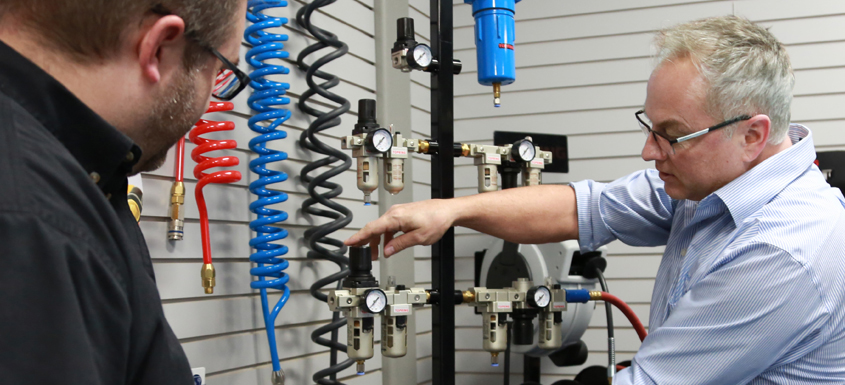With a network of pipes, joints and valves that can often seem complex, your compressor room can sometimes hide nasty surprises. But it's only air, you say? Although air is everywhere in your plant, it is distributed at a cost.
Do you let your faucet run if there is a water leak? Certainly not. The same applies to the piping system for compressed air. Unlike water or oil, air leaks are invisible and not destructive ... but they are expensive. What is the solution? A proactive approach should be taken with a regular leak detection program.
Topring offers a wide range of products (approximately 8,000) and services to ensure the performance of your compressed air network and the efficiency of your worksite processes. Whether it is due to leaks in the network or a poor configuration of the compressed air system, Topring can help you choose the right products tailored to your specific operating conditions, to make your network airtight and thus reduce operating costs.
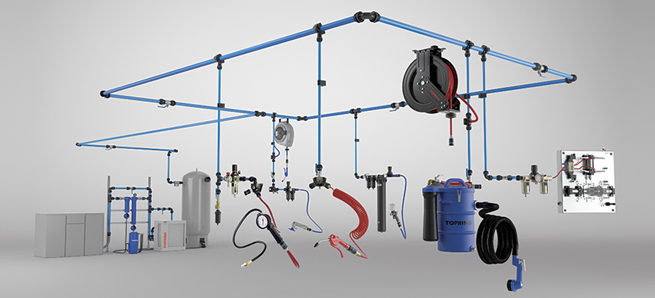
Identifying issues in order to resolve them
In order to take appropriate action on your compressed air system, you must be able to identify the symptoms of any leaks. There are numerous symptoms:
- Your compressors may start up even when the tools or equipment are off.
- Pneumatic tools or equipment may run out of air when they are running.
Leaks are sometimes audible and you may hear the sound of escaping air. The problems start with one or two small leaks that may not be noticed right away. Then the leaks multiply or grow.
The accumulation of leaks not only causes concern about the efficiency and productivity of the system as a whole, but also results in high energy costs. With compressed air costs ranging around $0.25/1000 cfm ($0.08/kWh), the average plant can potentially save significant amounts of money simply by establishing a leak detection and repair program. Every leak has a cost. That's why it's important to act quickly.
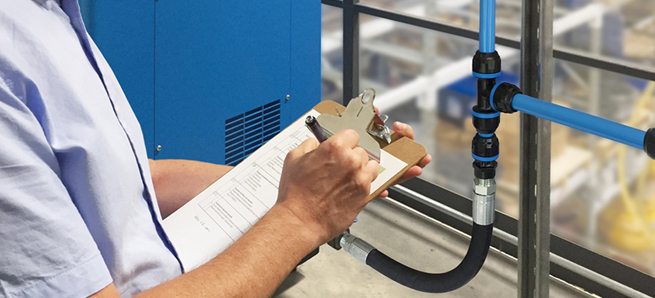
Educational approach
An audit not only provides a diagnosis but also (and above all) raises awareness among the decision-makers in the plant, such as the general manager, the maintenance manager or the health and safety manager. "We are specialists in pneumatic components, but we take a global approach and provide extensive expertise. We cover everything from A to Z and are able to propose the necessary solutions," explains Anne-Catherine Ménard, co-president of Topring.
An audit is the most direct way to establish where you stand and allows a client to:
- Obtain an overall assessment of air leakage;
- Identify critical locations related to air leakage;
- Estimate the costs associated with leaks;
- Implement the necessary actions according to priorities.
Energy losses occur in two ways: pressure loss and reduced flow. "Too often we only worry about compressor pressure, but we forget about CFM, the air flow rate, which is also a measure of compressor efficiency," explains Dominic Fecteau, technical and sales advisor at Topring. This explains why it is sometimes preferable to increase the size of a network's tubing to improve the airflow rate.
In addition, the compressed air sector is evolving by leaps and bounds, and the arrival of aluminium air piping has completely revolutionised the sector. "In the context of the paper industry, with its regulations regarding humidity and rust, it is not surprising that we prefer the use of aluminium over steel. Today, we can upgrade a compressed air network without turning everything upside down, working from the existing network," says Alexandre Ménard, National Sales Manager.
Assess and take action
Ultrasound measuring devices are very effective for measuring compressed air leaks, especially for elevated locations (up to 20 metres). This method is very accurate and should be used whenever possible. It's best to call upon the experts who specialize in leak detection. Contact one of Topring's consultants to find out more about this effective method of air leak detection. "We'll walk you through the process," promises Fecteau.
A fairly intuitive method of detecting air leaks is to listen for them when the compressed air system is shut down. You will be able to hear and then feel the air leaks. Of course, this may only be possible for relatively large leaks and you must be able to get close enough to the air system to touch it.
You have probably already heard of the lightly soaped water bottle method. This is a cheap and simple technique for detecting leaks. It involves spraying soapy water on the connections. Soapy bubbles will appear at critical points if there is an air leak. You will then see where the leaks are located.
The bottom line is that you know your compressed air system better than anyone else. Regular maintenance of the system's components ensures its smooth operation and efficiency. Your maintenance schedule should be adapted to the conditions of use.
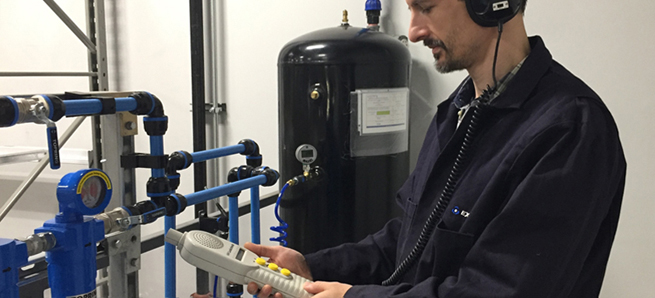
Detecting air leaks is an important step in the compressed air system maintenance process. Repairing air leaks is just as important, if not more so! Unfortunately, companies often invest in a leak detection program and then never actually implement it. Make a long-term and ongoing plan: start by repairing the most critical points, then the less critical ones.
Some examples of maintenance operations:
- Use of a suitable thread sealant to eliminate leaks;
- Replacing filter elements;
- Tightening fittings where required;
- Replacing faulty quick couplings, flexible hoses and air tools.
The ultimate goal will always be clean, dry air.
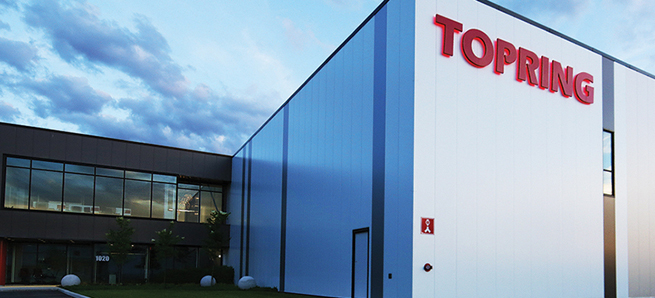
|
About Topring
Compressed air is an essential source of energy used in many industries, including the pulp and paper sector. Topring’s solutions cover all aspects of a compressed air network: air treatment, fluid transport, connection to pneumatic equipment, air regulation and process automation. Topring’s products meet the quality, safety and specific needs of the industry.
You can depend on the Topring team to guide you through your compressed air network optimisation projects. www.topring.com



